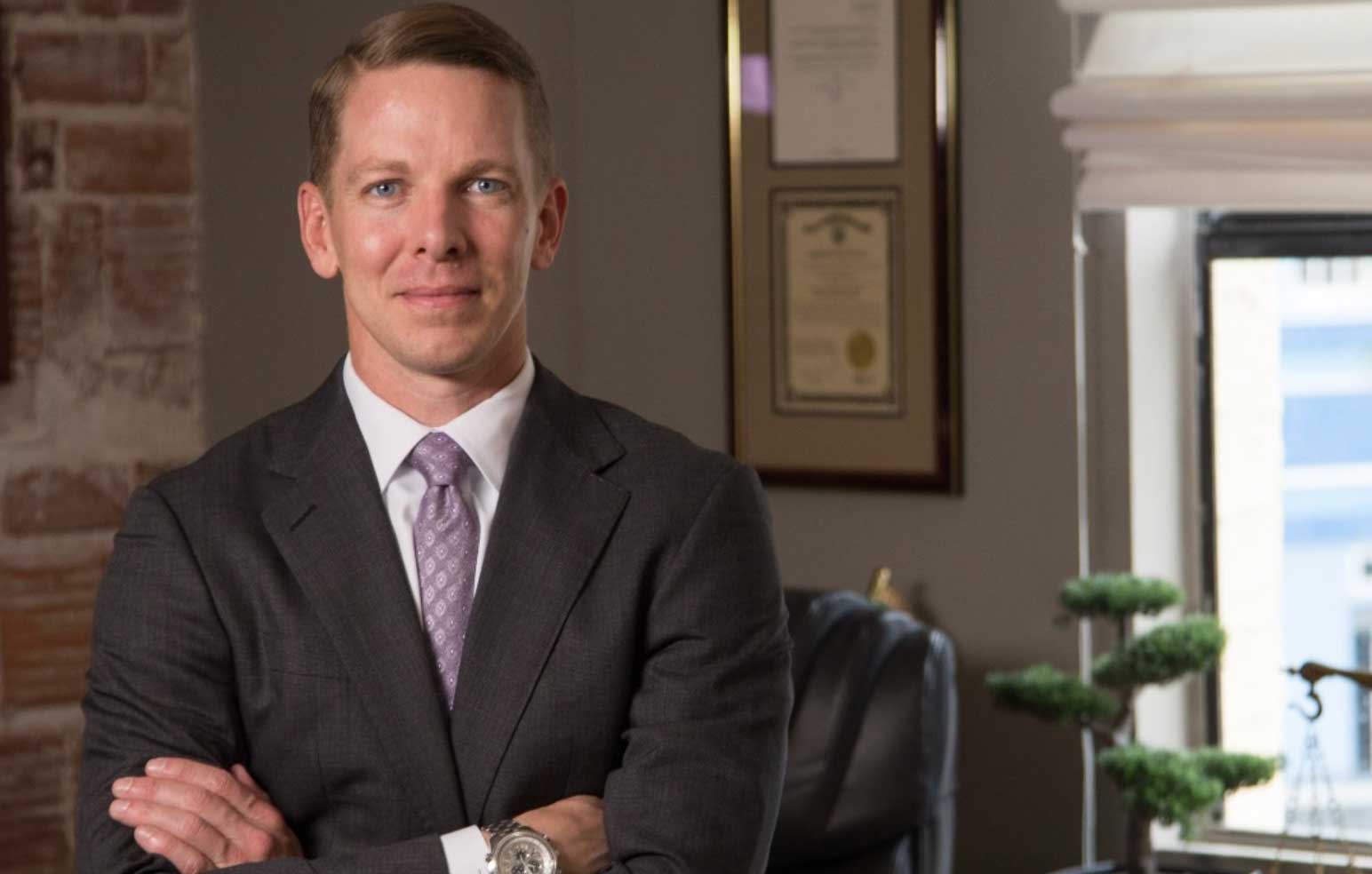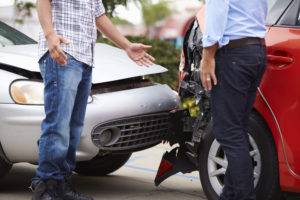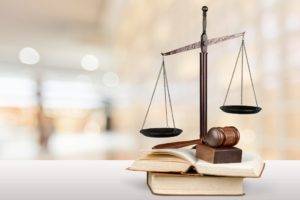Bicycle accidents are common across the country, but approximately 6,400 such incidents occur in Florida annually.
Sadly, many of the bicycle accidents that happen in Florida result in fatalities. The state also leads in this area as many roadways lack designated bike lanes, resulting in bicyclists having to share the road with motor vehicles. However, drivers often fail to yield to bikes or don’t see them until it’s too late.
Florida Bicycle Accident Overview
Florida leads the country in most bicycle accident deaths. There are many reasons why this is the case, but the most common are failure to yield the right of way by drivers of passenger vehicles and other, larger vehicles, poor visibility, disregarding traffic signs and signals and improper turns.
Need free legal help in Florida?
We specialize in personal injury claims.

U.S. Bicycle Accident Statistics
According to data from the National Highway Traffic Safety Administration (NHTSA), recent years saw more than 900 deaths stemming from bicycle accidents across the United States. This equates to 2.4% of all traffic-related fatalities, which marks an increase of 0.2% over a 10-year period.
During that 10-year period, more male bicyclists suffered injuries than females; males were injured four times more than females. Also, the most affected age group to die from a bicycle accident are individuals between 60 and 64. This group has a fatality rate of 0.57 per 100,000 people. Meanwhile, the age group most likely to suffer injuries ranges from 15 to 20 years old.
Most bicycle accidents resulting in fatalities occur in urban areas. The rate of these incidents is 79% compared with in rural areas, which carries only a 21% rate. Most fatal bicycle accidents occur in areas other than intersections and during daylight hours.
Florida’s Bicycle Accident Data
According to the Florida Highway Safety and Motor Vehicles (FLHSMV), bicycle accident fatalities have increased in recent years. Riders between the ages of 50 and 59 are impacted the most, and accidents happen most often in rural areas. The NHTSA reports that Florida saw an increase of 5% in road fatalities stemming from bicycle accidents.
Primary Locations of Bicycle Accidents in Florida
Primary locations of bicycle accidents in Florida include Broward, Hillsborough, Orange, Palm Beach, Pinellas and Volusia. Gainesville also has the most clusters of any city within the state in terms of bicycle accidents.
Common Causes of Bicycle Accidents
There are many factors that can lead to bicycle accidents. However, the most common causes are vehicle-related accidents, accidents involving dooring, intersection collisions, unsafe passing situations, riding on sidewalks incidents, bicycle accidents caused by poor road conditions, distracted driving, speeding, impaired driving, inadequate lighting, reckless riding, hazards from improperly opened car doors, bicycle collisions due to sudden stops, pedestrian crossings and bicycle accidents and bicycle accidents involving dog attacks.
Vehicle-Related Accidents
Many bicycle accidents are caused by drivers of motor vehicles. When a car or other larger vehicle strikes a bicycle, it can have devastating consequences for the cyclist. Common scenarios involving bicycles and larger vehicles are right-turn collisions, left-turn collisions and rear-end collisions.
Right-Turn Collisions
One of the common types of bicycle accidents involving other vehicles are right-turn collisions. These accidents usually occur when a car or other motor vehicle makes a right turn in front of a bicycle, crashing into it. They happen if a driver fails to see a bicycle in the right lane or when they simply disregard it and make a turn without ensuring they have plenty of room to do so to avoid an accident.
Left-Turn Collisions
Left-turn collisions occur when a car or other motor vehicle turns left in front of a bicycle. They account for some of the most dangerous bicycle accidents and often cause severe injuries. In most cases, they happen when a driver fails to yield the right of way to a bicycle.
Rear-End Collisions
Rear-end collisions rank as one of the deadliest types of bicycle accidents. They happen when a car or other larger vehicle hits a bike from behind. This can send the cyclist flying off their bicycle, landing on the road. Cyclists involved in these accidents can easily sustain catastrophic injuries or even lose their lives.
Accidents Involving Dooring
Dooring is a common type of bicycle accident. It occurs when a person on a bicycle travels in the right-most lane and a driver suddenly opens their door while parked. If a bicyclist doesn’t see this in enough time to react, they can strike the door and fall off the bike. However, some cyclists are able to see a car door open before they collide with it and try to avoid hitting it by swerving. This can cause another accident with a vehicle or even a pedestrian.
Intersection Collisions
Intersection collisions involving bicycles often happen because a driver fails to yield the right of way to the cyclist or doesn’t see them at all when proceeding through an intersection. To prevent these accidents from happening, cyclists and drivers of motor vehicles alike should carefully check all around to ensure that the area is clear and only proceed through the intersection when absolutely safe to do so.
Unsafe Passing Situations
Some bicycle accidents happen because of unsafe passing situations. This can occur whether a cyclist or driver of a motor vehicle fails to see another vehicle, makes a mistake or deliberately disregards the right of way rules. However, one of the biggest factors leading to bicycle accidents in unsafe passing situations occurs when drivers fail to give at least three feet of space when passing a bicycle.
Riding on Sidewalks Incidents
In Florida, bicycles are allowed to ride on sidewalks in some areas. However, cyclists must yield the right of way to pedestrians and alert them via bell, horn or vocally when they intend to pass them. Unfortunately, bicycle accidents can occur on sidewalks just like on roads. A pedestrian can get in the way of the bicycle or a cyclist can lose control of their bike and crash.
Bicycle Accidents Caused by Poor Road Conditions
Poor road conditions can easily cause bicycle accidents. If a pothole or uneven surface exists while a bicycle is traveling, it can cause the cyclist to lose control and fall over. Some accidents happen when the front tire of the bike catches on a slight incline, which can throw the cyclist off and land them on the pavement. Road construction can also contribute to conditions that make it more likely for bicycle accidents to happen.
Dangers of Distracted Driving
Distracted driving is one of the most dangerous habits on the road. Even if a driver doesn’t intend to become distracted behind the wheel, it can still happen. Actions such as eating or drinking, using a cell phone, conversing with passengers or even daydreaming seem mundane, but they can lead to distracted driving and cause devastating accidents that can be deadly when a bicycle is on the road. When a distracted driver hits a cyclist, it can result in death. A driver checking a text message even for five seconds can be considered equivalent to a vehicle traveling the length of a football field. Distracted driving makes it difficult or even impossible for a driver to safely slow down or stop to avoid an accident. This can be deadly for a bicycle rider.
Consequences of Speeding
Speeding is a major cause of bicycle accidents. When drivers speed, they place cyclists in serious danger. Speeding makes it far more difficult for drivers to control their steering. It’s also more difficult to safely stop when traveling at higher speeds. If a speeding vehicle hits a bicycle from any angle, it can leave the cyclist catastrophically injured or even killed.
Impaired Driving and Bicycle Accidents
Impaired driving is one of the most dangerous situations for anyone on the road. It can be even deadlier for bicyclists. Cyclists should always refrain from consuming alcohol when they plan on riding. Drivers should also avoid alcohol to prevent a potential accident with a bicycle, pedestrian or other vehicles while impaired. Even a slight impairment can prevent drivers from having ample control over their steering, speed and braking. It also lowers reaction time, judgment and coordination, which makes it so dangerous for cyclists and others on the road.
The Importance of Adequate Lighting
Adequate lighting can make all the difference when a bicycle is on the road after dark. It ensures that drivers of motor vehicles are better able to see the bike compared with dimly lit areas. If drivers can see a bicycle sharing the road with them, they can take precautions to avoid a collision.
The Risk of Reckless Riding
Some bicycle accidents happen because riders are reckless. For example, a cyclist focusing more on performing wheelies on the road instead of riding properly is more likely to lose control of the bicycle and fall or get into a crash with a larger vehicle. Focusing on tricks like that or performing other reckless moves on a bicycle can spell disaster.
Hazards from Improperly Opened Car Doors
If a driver or passenger opens a car door without first checking to ensure that there are no bicycles approaching, it can lead to a serious hazard. It’s also one of the most common causes of bicycle accidents. When people are cautious and slowly and tentatively open car doors, it can prevent hazards from improperly opened car doors.
Bicycle Collisions Due to Sudden Stops
Sudden stops can lead to bicycle accidents and cause cyclists personal injury or even death. A motor vehicle suddenly stopping in front of a bike can cause the cyclist to hit the back of it and go flying off the bicycle. They can be thrown over the back of the other vehicle or onto the road.
Pedestrian Crossings and Bicycle Incidents
Some bicycle accidents involve pedestrians. Cyclists must yield the right of way to pedestrians when they are in crosswalks and when riding on sidewalks. They must stop at red lights and stop signs just like motor vehicles. Bicycle accidents with pedestrians can occur when cyclists don’t follow these rules or when pedestrians fail to cross properly.
Mechanical Failures Leading to Accidents
In some cases, mechanical failures can lead to bicycle accidents. This can be due to a tire blowout, broken crank, broken chain, derailed derailleur or weak fork. Any of these issues can cause the bicycle to malfunction and a crash to occur. Depending on the specific problem and other circumstances, riders can be left seriously injured or even killed.
Bicycle Accidents Involving Dog Attacks
If a dog gets loose, an owner negligently allows their dog off a leash or a stray is running around, it can result in a bicyclist getting attacked. In addition to experiencing dog bite injuries, the cyclist can also suffer a bicycle accident. A large enough dog can knock a bicycle over and cause significant damage. If the dog is someone’s pet, the owner can be held liable for the victim’s injuries and property damage.
Need free legal help in Florida?
We specialize in personal injury claims.

Typical Injuries Following a Bicycle Accident
Some injuries are typical after a bicycle accident. They include head injuries, spinal cord damage, fractures and dislocations, soft tissue injuries, internal organ trauma and psychological distress.
Head Injuries
Often, when a bicycle accident occurs, the rider is thrown and lands on the ground. In some cases, they may land head-first, which can cause head injuries. These can range from milder concussions to severe traumatic brain injuries. Wearing a bicycle helmet can reduce riders’ risk.
Spinal Cord Damage
Even in minor bicycle accidents, a rider can suffer spinal cord damage. If a cyclist falls and lands a certain way, they can sustain a spinal cord injury that can result in trauma or even paralysis. More serious versions of this injury can shorten a person’s life.
Fractures and Dislocations
Bicycle accidents commonly result in fracture and dislocation injuries. A rider can land on a specific part of their body and suffer trauma that causes a fracture or dislocation. For example, if the cyclist puts their hand out to break their fall, they can suffer a wrist fracture. If they land most of their weight on their arm or shoulder, it can cause a dislocated shoulder.
Soft Tissue Injuries
Soft tissue injuries are among the most common due to bicycle accidents. When a rider falls from their bike, they can suffer these injuries from the impact on the pavement or an object. These injuries cause cuts, scrapes and lacerations. Depending on the severity, a person might need surgery to repair the damage.
Internal Organ Trauma
If a bicycle accident is caused by the negligence of a motor vehicle driver, it can cause catastrophic injuries involving internal organ trauma. Getting hit by a car can lead to serious damage. These injuries are emergency situations that can be life-threatening.
Psychological Distress
Even if a cyclist is lucky enough to escape from a bicycle accident without physical injuries, they can still be left with psychological distress. This is common after such a traumatic situation; the person might be too scared and filled with anxiety to get back on their bicycle. It’s possible to develop a phobia of riding and even crippling post-traumatic stress disorder (PTSD).
Florida’s Most Hazardous Cycling Areas
DeSoto County is considered the most hazardous cycling area in Florida. Other dangerous areas for bicycling are Union, Hardee, Bradford and Monroe Counties.
Bicycle Safety Advice for Accident Prevention
Although bicycle accidents aren’t always preventable, cyclists can stay safer and prevent some by using helpful safety advice. This includes utilizing helmets and protective gear, maintaining high visibility, adhering to roadway regulations and preferring bike lanes when accessible.
Utilize Helmets and Protective Gear
While riding a bicycle, it’s important to wear a well-fitting helmet, gloves and protective elbow and knee pads. A mouthguard is an optional piece of equipment that can protect your teeth in the event of an accident.
Maintain High Visibility
Brightly-colored clothing and reflectors can help bicyclists stay visible at night and in low-lit areas. It makes it easier for drivers to see bicycles on the road.
Adhere to Roadway Regulations
Bicycles should ride with traffic instead of against it and to avoid crossing areas without intersections. Cyclists must adhere to the rules of the road just like drivers of motor vehicles. They should stop at stop signs and red lights, yield the right of way to traffic and allow pedestrians to safely cross before proceeding through intersections. Cyclists are also expected to safely share designated sidewalks with pedestrians
Prefer Bike Lanes When Accessible
Some road areas have designated bike lanes for cyclists. When they are available, cyclists should ride in those areas instead of in other lanes on the road or on the sidewalk.
Legal Protections for Bicyclists
Florida law allows bicyclists to share the roads with motor vehicles and requires cyclists to follow the same laws, rules and regulations as drivers. Unfortunately, bicycle accidents sometimes occur. If a driver is at fault due to negligence or recklessness and a cyclist suffers injuries and damage to their bike, they have the right to file a personal injury lawsuit.
Typical Legal Settlements for Bicycle Accidents
The amount received in a bicycle accident settlement varies based on the circumstances. However, on average, a settlement can range from $100,000 to $600,000.
Variables Influencing the Value of a Bicycle Accident Case
Certain variables can influence the value of a bicycle accident case. They include financial losses in the accident and emotional and non-monetary damages.
Financial Losses in Bicycle Accidents
Financial losses such as medical bills, rehabilitation expenses, lost wages and lost earning capacity and funeral and burial expenses could all impact the value of a bicycle accident. These are all considered economic damages.
Emotional and Non-Monetary Damages
Emotional and non-monetary damages in a bicycle accident case are those that cannot be measured by a specific dollar amount. An injured victim’s pain and suffering, emotional distress and mental anguish don’t have set financial value, but they all affect the plaintiff’s ultimate settlement.
Frequently Asked Questions
How Many Bicycle Crashes in Florida
In Florida, there are around 6,400 bicycle crashes annually.
What Are the Common Causes of Bicycle Accidents in Florida?
Common causes of Florida bicycle accidents are speeding, disregarding traffic laws, running red lights or stop signs, unsafely changing lanes, failure to yield and impaired driving.
What Happens if You Hit a Cyclist in Florida?
Florida law requires you to remain at the scene of the accident if you hit a cyclist. If you leave, you can later be charged with a hit-and-run.
Is Florida Bike-Friendly?
Florida is considered one of the top 10 most bike-friendly states. Unfortunately, it also has more bicycle accident fatalities.
Which State Has the Most Bike Accidents?
Delaware has the most bike accidents.
Where Do Most Cycling Accidents Occur?
Most cycling accidents occur in urban areas such as in bigger cities.
Does Florida Have the Most Bicycle Fatalities Compared to Other States?
Florida has the highest rate of bicycle fatalities per 100,000 people compared with other states.
What Is the Most Common Reason for Cyclist Fatalities?
Accidents with motor vehicles rank as the most common reason for cyclist fatalities.
How Many Crashes a Year in Florida?
In 2021, Florida saw nearly 6,400 bicycle crashes. Similar numbers recur annually.
How Many Crashes Occur Each Year in Florida?
In Florida, there are around 380,000 crashes each year. This accounts for all types of vehicles.
Where Do Most Crashes Happen in Florida?
Most crashes in Florida happen in urban areas due to higher rates of traffic. They occur most often at intersections.
Is it Illegal to Ride a Bike Drunk in Florida?
It’s illegal to ride a bike drunk in Florida. If you’re under the influence of alcohol while riding, you can be charged with a misdemeanor.
Can You Ride Your Bike at Night in Florida?
You can ride your bike at night in Florida but must have proper equipment on your bicycle such as lights and reflectors to ensure that you can be seen from 500 and 600 feet away, respectively.
What Is the Bicycle Law in Florida?
Florida’s bicycle law allows cyclists to share the road with motor vehicles and some sidewalks with pedestrians. Cyclists must follow the rules of the road, obey all traffic laws and ride in bike lanes where they are available. Cyclists younger than 16 must wear properly-fitted, fastened helmets. Bikes should be equipped with white lights in front that are visible up to 500 feet and rear red reflector that’s visible up to 600 feet. All bicycles should have working brakes so riders can stop within 25 feet at 10 miles per hour on normal, dry pavement conditions.
How Many Cyclists Are Killed Each Year in the U.S.?
Around 1,000 cyclists are killed each year in the United States.
Need free legal help in Florida?
We specialize in personal injury claims.






